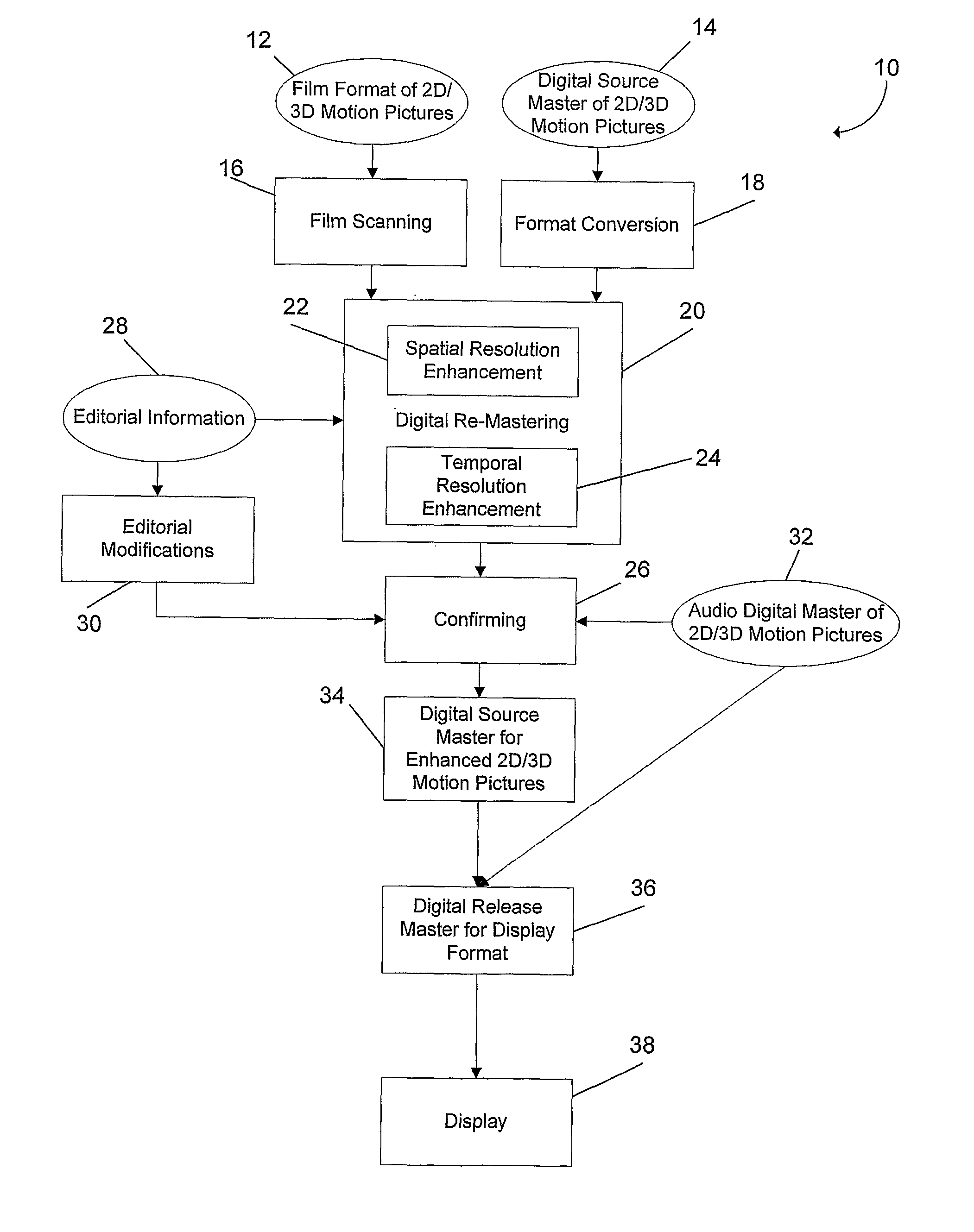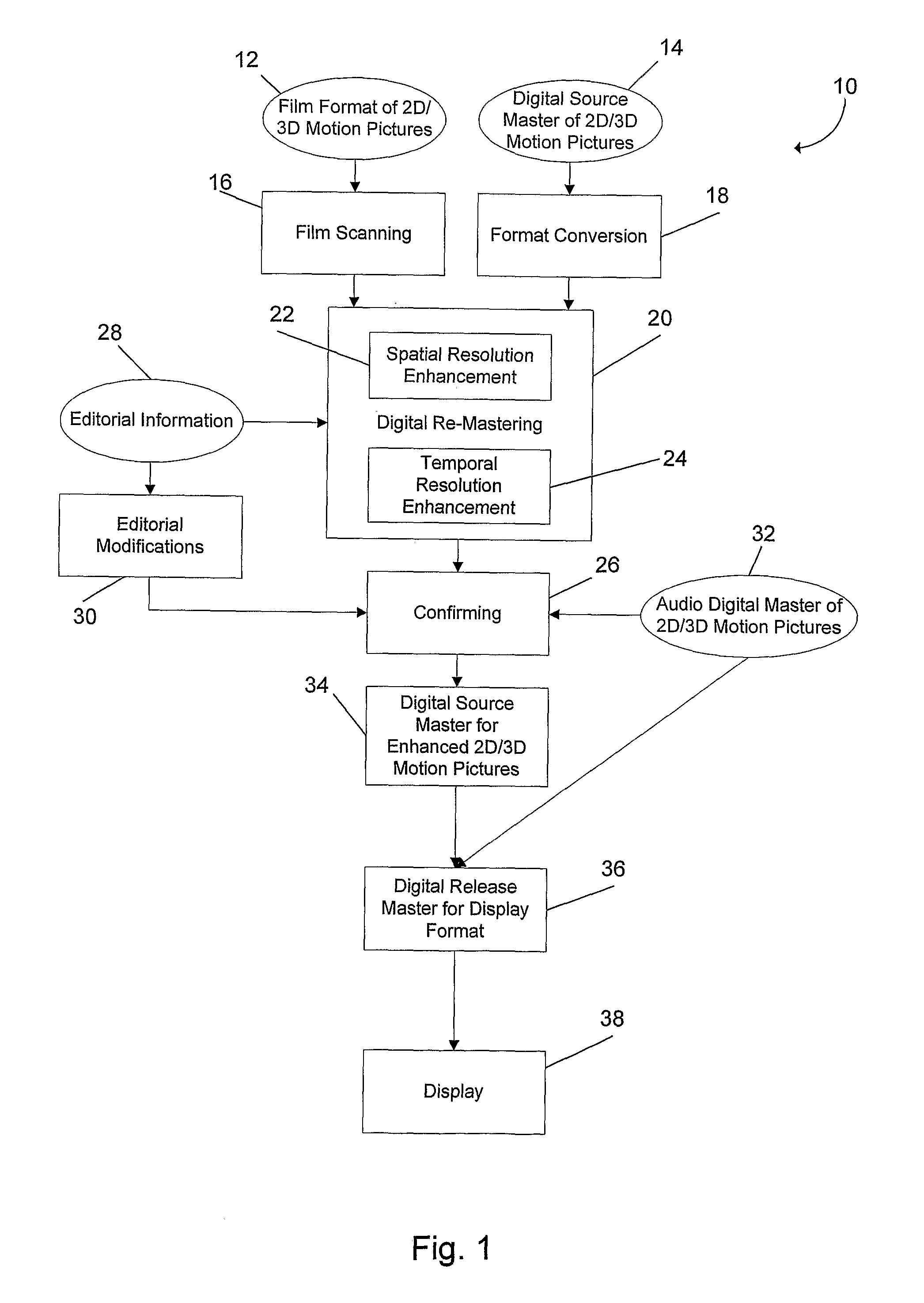Methods and systems for digitally re-mastering of 2d and 3D motion pictures for exhibition with enhanced visual quality
a technology of digital re-mastering and motion pictures, applied in the field of methods and systems for enhancing motion pictures, can solve the problems of not providing for digital re-mastering of an entire motion picture or producing acceptable image quality for cinematic or large, system does not provide artifact repair or sufficient processing speed, and both economical and technical limitations that prevent film-based motion pictures from being produced at a higher frame rate, so as to enhance perceived resolution and visual image quality, enhance spatial resolution, enhance the effect of resolution
- Summary
- Abstract
- Description
- Claims
- Application Information
AI Technical Summary
Benefits of technology
Problems solved by technology
Method used
Image
Examples
Embodiment Construction
[0026]FIG. 1 shows one embodiment of a process 10 for enhancing motion picture image sequences. The process 10 starts by receiving motion picture image sequences that may be in a film format of 2D or 3D motion picture 12 or a digital source master of 2D or 3D motion pictures 14. If the motion picture is in the 2D or 3D motion picture film format 12, it is scanned using a film scanning process 16. If the motion picture is a digital source master 2D or 3D motion picture 14, the data can be used directly or can be converted into another digital format using a format conversion 18.
[0027]After film scanning 16 or format conversion 18, the motion picture sequence data includes image sequences or frames. The image sequences are then enhanced by a digital re-mastering process 20. The digital re-mastering process 20 can include a spatial resolution enhancement method 22 and a temporal resolution enhancement method 24, embodiments of which are described in more detail below. The spatial resol...
PUM
 Login to View More
Login to View More Abstract
Description
Claims
Application Information
 Login to View More
Login to View More - R&D
- Intellectual Property
- Life Sciences
- Materials
- Tech Scout
- Unparalleled Data Quality
- Higher Quality Content
- 60% Fewer Hallucinations
Browse by: Latest US Patents, China's latest patents, Technical Efficacy Thesaurus, Application Domain, Technology Topic, Popular Technical Reports.
© 2025 PatSnap. All rights reserved.Legal|Privacy policy|Modern Slavery Act Transparency Statement|Sitemap|About US| Contact US: help@patsnap.com



